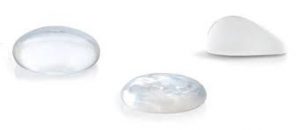
Most cases reviewed by the FDA were diagnosed when patients sought medical treatment for breast implant-related symptoms, such as pain, lumps, swelling or asymmetry. These symptoms developed long after the initial surgery had been performed and after the surgical sites had fully healed. The cause of the ALCL in these patients is not known for sure and could include a variety factors including a collection of the fluid around the implant (peri-implant seromas), hardening of the breast area around the implant (capsular contracture) or lumps/masses discovered around the implant.
The recommendations for women with breast implants is that they should continue their regular self-examination and mammography as needed. Women with breast implants should watch for changes in their breasts such as pain and swelling, and contact their plastic surgeon if they have questions.For plastic surgeons, the FDA recommends testing for ALCL if a patient has a late onset and persistent fluid around the implant. By sending a sample of this fluid to a pathology lab, it can be tested for ALCL. Women with breast implants who are not showing any symptoms or problems do not need to do anything. The FDA is not recommending the routine removal of breast implants in patients without symptoms or other abnormalities.
From my perspective on this new information, it is important that all breast implant patients realize that the the number of cases reported thus far is very tiny. The FDA has verified 37 such cases in women with breast implants since 1997 out of an estimated 5 million to 10 million women who have had breast implants placed. That is a risk factor of between 0.0000037% and 0.0000074% or 1 in every 80,000 to 150,000. That is higher than the known incidence of ALCL in women in the United States which is about 1 in 500,000 and just 3 in 100 milliondevelop it in a breast.
While this communication and recommendation from the FDA is new, this information has been reported and looked at since early last year. Women with breast implants have no need to panic or worry about their existing indwelling breast implants.
Dr. Barry Eppley
Indianapolis Indiana


